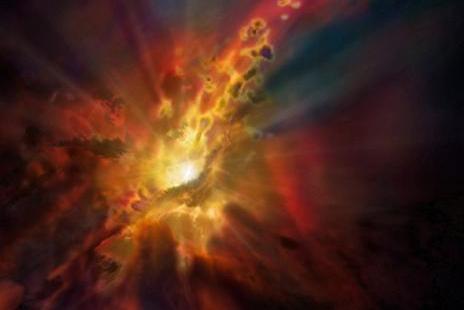
NEW HAVEN, Conn., June 8 (UPI) — Until now, astronomers thought black holes are fueled almost exclusively by steady diet of hot, ionized gas. But astronomers from Yale and MIT have spotted a supermassive black hole devouring cold gas — a first.
The new findings, detailed in the journal Nature, suggest black holes enjoy an expansive and varied diet.
“Every now and then, you can have a rainstorm with all these droplets of cold gas, and for a short amount of time, the black hole’s eating very quickly,” McDonald said. “So the idea that there are these two dinner modes for black holes is a pretty nice result.”
Scientists discovered the black hole while using the Atacama Large Millimeter/submillimeter Array, or ALMA, the survey the distrubution of gas across the ancient galaxy cluster Abell 2597, located 1 billion light-years away and comprising 50-odd galaxies that stretch several thousand light-years across.
While plotting the distribution of cold, condensed gas — the kind that forms new stars — researchers identified three gas clouds streaming toward the accretion disk of the supermassive black hole at the center of the cluster. The clouds are traveling at a speed of more than 1 million miles per hour and measure several dozen light-years across.
Researchers have suggested a cold gas meal was possible in theory, but the latest discovery offers the first hard evidence of the phenomenon.
“It’s exciting to think we might actually be observing this galaxy-spanning ‘rainstorm’ feeding a black hole whose mass is about 300 million times that of our Sun,” Grant Tremblay, lead study author and Yale astronomer, said in a news release.
“Since we know so little about the mechanics of how the AGN, active galactic nucleus, interacts with the rest of the galaxy, this is a real step forward,” added study co-author Louise Edwards, also a Yale astronomer.
Researchers are now using ALMA to search for similar “rainstorms” inside other galaxies and galactic clusters.





